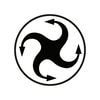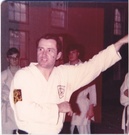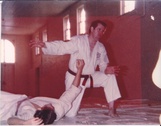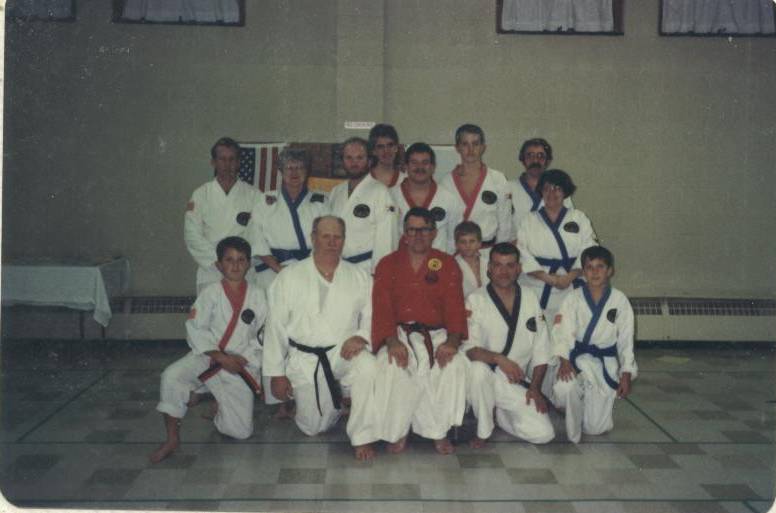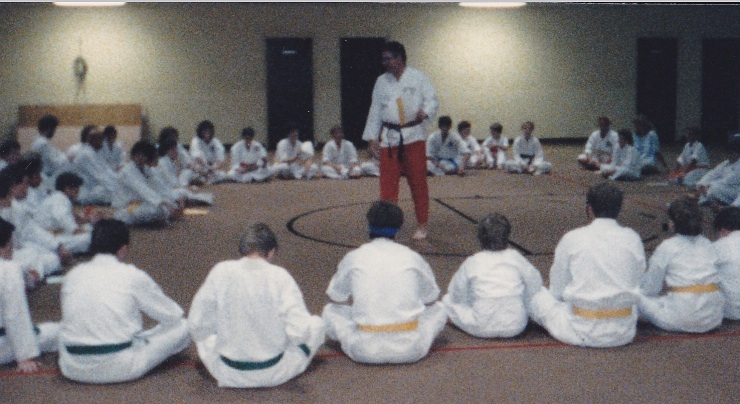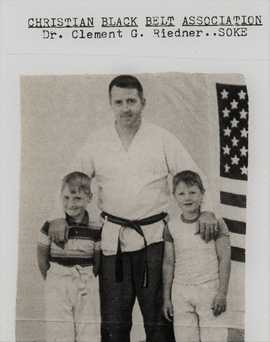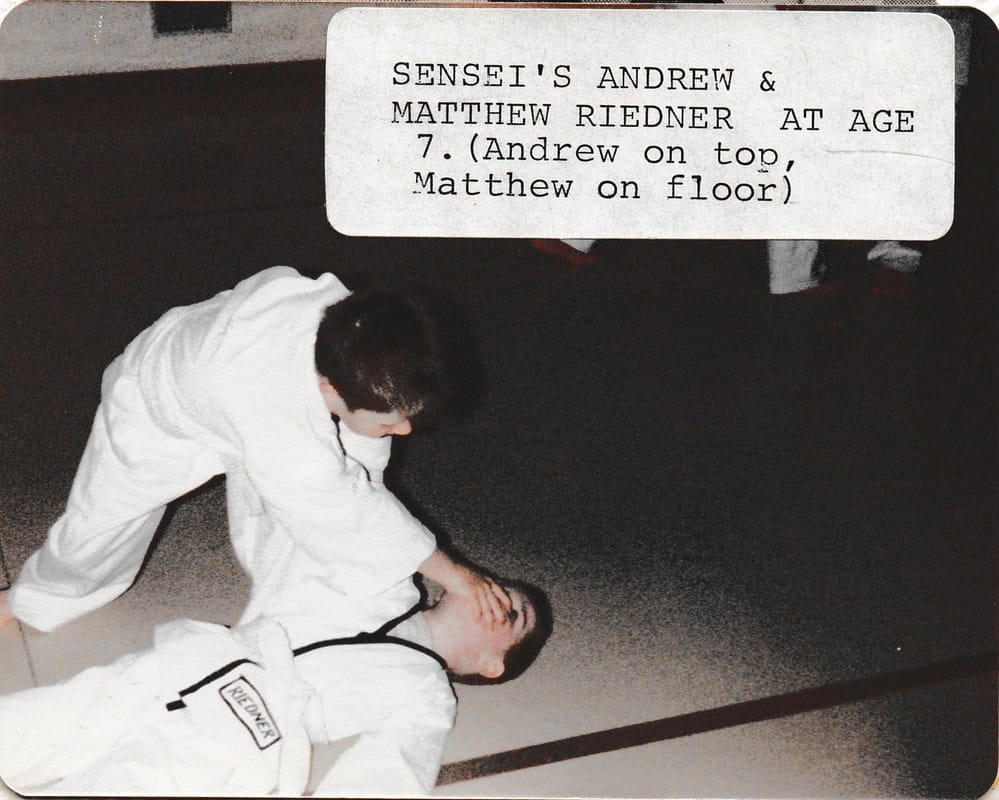
Nippon Shiho Karano Ryu® is a combination of traditional Japanese Karate-Do and traditional Japanese Ju-Jitsu developed by Soke Clement G. Riedner. Soke Clement Riedner began his training in the martial arts in Tokyo, Japan in May of 1962. Soke entered a Motobu-Ha Shito Ryu class located on the air base where he was stationed. Entering the Motobu-Ha Shito Ryu class he was one of the few American students of Kayo-San, an NCO in the Japanese Air Force and a close friend of Shiyogo Kuniba, Soke of the Motobu-Ha Shito Ryu system. In January 1965 Soke Riedner became the second American to ever receive his black belt from Soke Kuniba. Upon his return to the U.S. in 1965 Soke Riedner continued to train in Motobu-Ha Shito Ryu later receiving his 2nd degree Black Belt in 1966 from Mr. Richard Balliargeon.
During the mid 1970s Soke Riedner had the opportunity to periodically visit and train under Harold Martin, Soke-Dai of the Kamishin Ryu system of Soke Albert C. Church. Kamishin Ryu was the Japanese title for the original “ShaolinJi Tetseken Ryu Kempo” system inherited by Soke Church from Kooh C. Kim and recognized by Soke Shiyoga Kuniba and Mr. Teriyo Hiyashi of the Seishin Ka Karate Union. In March 1978 Soke Church awarded Soke Riedner a 5th Dan (Godan) in Kamishin Ryu Kempo and recognized Soke Riedner as Shodai Soke (1st Generation) of his style “Nippon Shiho Karano Ryu Kenpo Jitsu.”
Further hard first karate training and rankings, all of which have impacted the development of Shiho Karano Karate-Do, include a 2nd Dan in American Goju Ryu in 1982, a 1st Dan in Isshin Ryu Karate in 1986, and a 4th Dan (Yondan) in Aka Ryu Shakai Kempo in 1978 from Dr. Roy James Brown.
The Karate-do of Nippon Shiho Karano® is based primarily on Motobu-Ha Shito Ryu and has been influenced by several other styles including Kamishin Ryu, Isshin Ryu, and Goju Ryu. As the base of NSKR Karate-do, Shito Ryu is a hybrid of the two major styles of Okinawan Karate and therefore contains every major Kata practiced in the first part of this century. The name “Motobu-Ha” came from Choki Motobu who taught various kumite principles to the founder of the system, Kenwa Mabuni. The history of Shiho Karano Ryu Karate is one that reflects both a deep respect for traditional forms and innovative use of technique.
The student entering into Nippon Shiho Karano Ryu® will first learn the four basic Kata devised by Shito Ryu founder Kenwa Mabuni. He will then learn the five Heion forms of Anko Itosu. Still before Black Belt he learns the Kamishin Ryu form Sanchin Sho. For Shodan the Shorin Ryu forms of Jeon and Jitte are required. After first Dan the student will continue to learn forms from Okinawa and Japan, a few which have been modified and some very traditional. The fighting aspect of this art is based on a thorough understanding of the forms and kumite principles taught by Choki Motobu then developed by Soke Kuniba, Soke Church, and Soke Riedner. Like the Kata, training is rooted in traditions but allows for the student to expand his abilities and personal limits.
Nippon Shiho Karano Ryu® also combines traditional Japanese Ju-Jitsu primarily based on Soke’s training in Hakko Ryu Ju-Jitsu. While in college in the late 1960’s Soke Riedner studied Hakko Ryu Ju-Jitsu under Master James A. Benko of Akron, OH and served as a representative for the HMAF (Hakko Ryu Martial Arts Federation) of which Master Benko was President. Soke Riedner eventually earned his 4th Dan (Yondan) in Hakko Ryu Ju-Jitsu under Master Benko in 1969.
A history of Hakkoryu is documented in the book “Shiho Karano Ryu History & Traditions”; however, it should be noted that this style is primarily a revision of Daito Ryu Ju-Jitsu. Other systems of Ju-Jitsu studied by Soke were Haragei Ryu Ju-Jitsu and Judo. Soke combined elements of each of these styles along with Chin-Na, Karate Kata Bunkai, and one-steps to form the Shiho Karano Ju-Jitsu style in 1970.
During the mid 1970s Soke Riedner had the opportunity to periodically visit and train under Harold Martin, Soke-Dai of the Kamishin Ryu system of Soke Albert C. Church. Kamishin Ryu was the Japanese title for the original “ShaolinJi Tetseken Ryu Kempo” system inherited by Soke Church from Kooh C. Kim and recognized by Soke Shiyoga Kuniba and Mr. Teriyo Hiyashi of the Seishin Ka Karate Union. In March 1978 Soke Church awarded Soke Riedner a 5th Dan (Godan) in Kamishin Ryu Kempo and recognized Soke Riedner as Shodai Soke (1st Generation) of his style “Nippon Shiho Karano Ryu Kenpo Jitsu.”
Further hard first karate training and rankings, all of which have impacted the development of Shiho Karano Karate-Do, include a 2nd Dan in American Goju Ryu in 1982, a 1st Dan in Isshin Ryu Karate in 1986, and a 4th Dan (Yondan) in Aka Ryu Shakai Kempo in 1978 from Dr. Roy James Brown.
The Karate-do of Nippon Shiho Karano® is based primarily on Motobu-Ha Shito Ryu and has been influenced by several other styles including Kamishin Ryu, Isshin Ryu, and Goju Ryu. As the base of NSKR Karate-do, Shito Ryu is a hybrid of the two major styles of Okinawan Karate and therefore contains every major Kata practiced in the first part of this century. The name “Motobu-Ha” came from Choki Motobu who taught various kumite principles to the founder of the system, Kenwa Mabuni. The history of Shiho Karano Ryu Karate is one that reflects both a deep respect for traditional forms and innovative use of technique.
The student entering into Nippon Shiho Karano Ryu® will first learn the four basic Kata devised by Shito Ryu founder Kenwa Mabuni. He will then learn the five Heion forms of Anko Itosu. Still before Black Belt he learns the Kamishin Ryu form Sanchin Sho. For Shodan the Shorin Ryu forms of Jeon and Jitte are required. After first Dan the student will continue to learn forms from Okinawa and Japan, a few which have been modified and some very traditional. The fighting aspect of this art is based on a thorough understanding of the forms and kumite principles taught by Choki Motobu then developed by Soke Kuniba, Soke Church, and Soke Riedner. Like the Kata, training is rooted in traditions but allows for the student to expand his abilities and personal limits.
Nippon Shiho Karano Ryu® also combines traditional Japanese Ju-Jitsu primarily based on Soke’s training in Hakko Ryu Ju-Jitsu. While in college in the late 1960’s Soke Riedner studied Hakko Ryu Ju-Jitsu under Master James A. Benko of Akron, OH and served as a representative for the HMAF (Hakko Ryu Martial Arts Federation) of which Master Benko was President. Soke Riedner eventually earned his 4th Dan (Yondan) in Hakko Ryu Ju-Jitsu under Master Benko in 1969.
A history of Hakkoryu is documented in the book “Shiho Karano Ryu History & Traditions”; however, it should be noted that this style is primarily a revision of Daito Ryu Ju-Jitsu. Other systems of Ju-Jitsu studied by Soke were Haragei Ryu Ju-Jitsu and Judo. Soke combined elements of each of these styles along with Chin-Na, Karate Kata Bunkai, and one-steps to form the Shiho Karano Ju-Jitsu style in 1970.
Initially recognized by Soke Albert C. Church as "Nippon Shiho Karano Ryu Kenpo-Jitsu", Nippon Shiho Karano Ryu ®, (sometimes referred to simply as "Shiho Karano" or abbreviated "NSKR"), has since evolved into four distinct (4) divisions or Ryu-Wa. Each of the four Ryu-Wa (listed below) constitute a vital part of the Art and each are needed to make the Style complete in its scope and teaching. Although each Ryu-Wa may be studied individually all Ryu-Wa consistently exemplify the philosophical and technical views of its founder. Individual Ryu-Wa are open for study by Yudansha outside of Shiho Karano Ryu with Dan ranking available in each Ryu-wa. The 4 Ryu-Wa of Shiho Karano are:
|
Soke Clement G. Riedner teaching a Nippon Shiho Karano Ryu® seminar at Maranatha Baptist Bible College in the early 1970's
Soke Riedner at a Nippon Shiho Karano Ryu ® seminar at Shalom Tae Kwon Do in the early 1990's
Soke Riedner teaching a seminar on Nippon Shiho Karano Ryu ® for the Christian Tae Kwon Do Association in 1986
|
Soke Riedner demonstrating technique on Shihan Ron Hagelganz during a Nippon Shiho Karano Ryu ® seminar at Whole Armor Martial Arts in 1997.
Soke Riedner teaching a seminar on Nippon Shiho Karano Ryu® at Koinonia 2003
|
In April of 2000 Soke Clement Riedner passed the inheritance of Nippon Shiho Karano Ryu ® to his sons, Andrew and Matthew Riedner. Currently, all training in Nippon Shiho Karano Ryu ® is handled by Nidai Soke Matthew Riedner.
Proudly powered by Weebly
